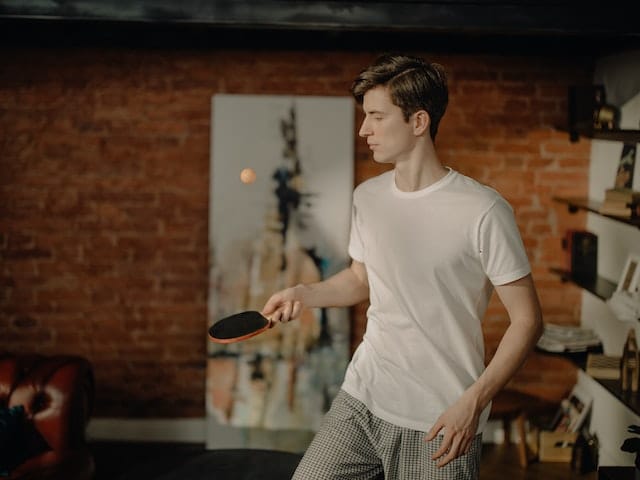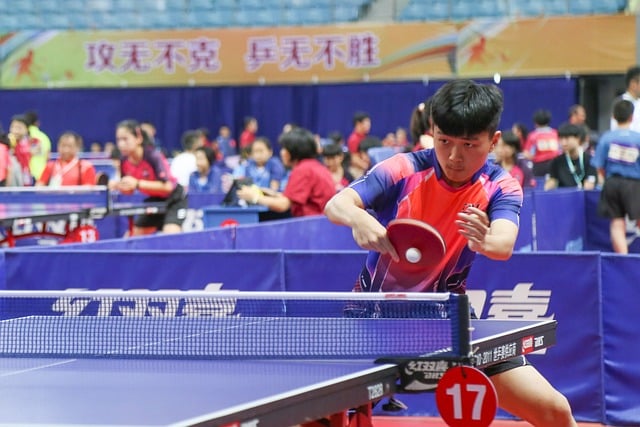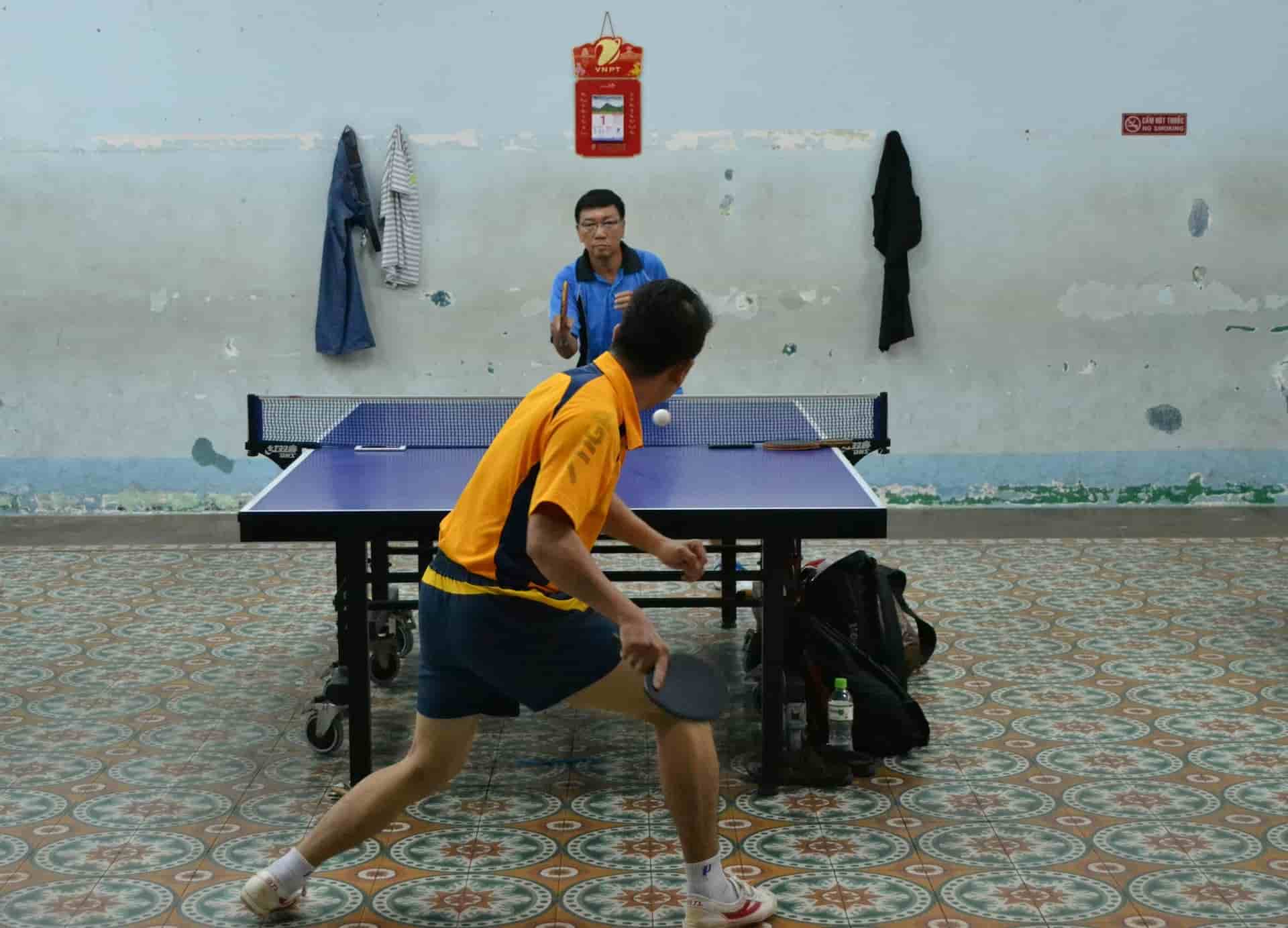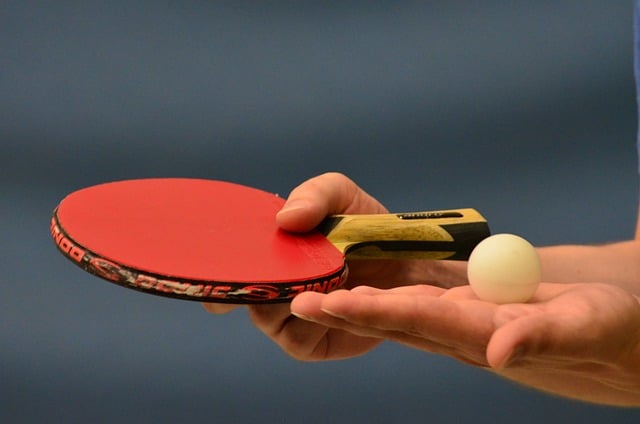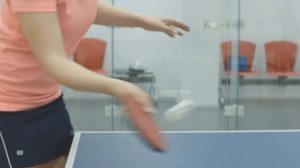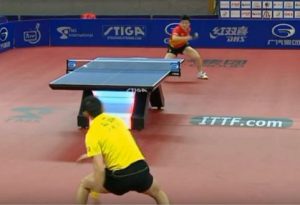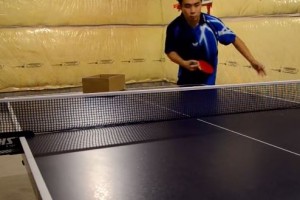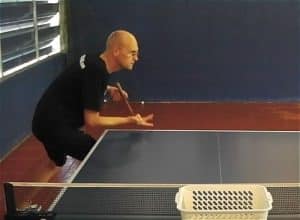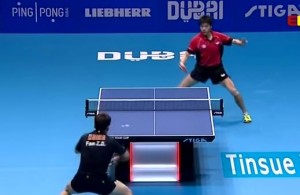While you might be keen to get stuck in with matches as soon as you hit the table, this is not the way to play if you are set on improving. Instead, leave matches until the end of your training sessions, and fill your time with targeted table tennis training drills. This will ensure your game is well-rounded. Drills are what shaped me into the player I am today!
Table of Contents
Table Tennis Practice Routine
Before we get into drill specifics, I think it’s first important to outline a rough practice structure you might want to follow. Playing nothing but matches is bad, but similarly, doing nothing but drills is also bad. It’s tedious and could cause you to lose interest which is the last thing we want. Therefore implement both as part of a healthy session. Also, don’t forget to warm up as this helps prevent injuries. I’ve been guilty of not warming up in the past and what do you know, I got injured. Wouldn’t recommend it.
Below is my proposed training structure. It is by no means a definitive structure you have to follow. Rather a loose guide that you should use to create your own. Also, for those who are interested, Ping Skill has a PDF training file, you can download that here.
Example 1-Hour Ping Pong Drill Session
- Muscle warm-up (Get the blood pumping and stretch) — 5 minutes
- Cross-court hitting warm-up — 10 minutes
- Drill 1: Backhand, forehand, forehand — 15 minutes
- Drill 2: Shorts serves with banana flick openers — 15 minutes
- Match Play — 15 minutes
Table Tennis Drills to Perform on Your Own
While the majority of table tennis training drills require a partner, there are a few that you can perform yourself.
Bounce the Ball on Your Racket
The first and most basic ping pong practice drill is to simply bounce the ball up and down on your racket without letting it hit the floor. Personally, I would only recommend this for absolute beginners, as for most players it’s not the best use of your time. If you opt to undertake this drill, try alternating between backhand and forehand and vary the force you use with your hits to make the drill more challenging.
You can also use a wall or solo playback mode on a table tennis table to practice playing against yourself. It’s very different from playing against a normal partner, but it can certainly be a helpful table tennis drill for beginners.
Shadow Play
Shadow play is a training method where you emulate the motions you would use while playing. So you’re in fact not playing table tennis at all as you are not striking a ball.
You can do shadow play anywhere although it helps to do it next to a table to ensure your position is correct. The advantage of this training method is that you can perform the movements much slower than in a match as there is no ball in play. This gives you time to become comfortable with them at your own pace.
Through repetition, these movements become part of your muscle memory which means you are naturally inclined to perform them in a match.
There’s no doubt shadow play is one of the more tedious drills in table tennis, however, I think it’s worth doing especially if you’re looking for a table tennis drill for beginners.
Service Practise
Although it’s great to have a partner to practice serves on to get immediate feedback, you don’t really need a partner at all. Simply gather a collection of balls and practice your serves to improve your control. Players should aim to be able to vary spin, placement, and speed without too much difficulty.
I recommend picking up a catch net to prevent the balls from going all over the floor. This means you can easily collect all the balls when you are out and get straight back to serving again.
Bonus: Robot Drills
If you own a table tennis robot you can dramatically enhance your solo table tennis practice sessions. The tools at your disposal depend heavily on the model of robot you have. However, most have at least some form of placement and spin control. As such, you can practice more or less everything you need to.
Most of the mid-range models and above have memory features that allow you to program alternating sequences of shots. This means rather than receiving the same topspin ball to your forehand over and over again, you can set the robot up so that you receive varied feeds. For example, a short backspin ball, followed by a heavy topspin ball, and then a fast ball down the middle to finish. This variation makes your drills much more versatile.
See specific drills below for examples of what you might want to program your robot with.
Drills For Accuracy and Footwork
Cross Court
The staple of table tennis training drills is cross-court hitting. It’s exactly how it sounds. Hitting the ball diagonally from one forehand corner to the other or one backhand corner to the other. Cross-court hitting is the best way to get your eye in at the start of each session, and as such, it’s the table tennis practice drill all serious players start with.
First, you should start with cross-court drives. These are simple to perform which means you ease into the session. Perform both backhand drives and forehand drives, it doesn’t matter which you do first.
Following this, if you can loop, you should loop cross-court. Have one player block and the other loop. It’s not about hitting the ball past your opponent, but rather, executing loops with great technique to prepare you for the rest of the session. Again, make sure you do both backhand and forehand, and each player should take their turn blocking.
Down the Line
Another useful enhancement drill in table tennis is down the line hitting. Like the cross-court drill, there is no major footwork involved, only precision. However, you may find it more difficult to perform as hitting down the line is a little more unnatural.
For this drill, one of you will be using your forehand while the other player uses their backhand. I recommend starting out with driving, however, if you can loop and you are warmed up, you may want to go straight into loop against block. Remember to shift over to the other side of the table so that you develop the capability to play both edges.
Backhand and Forehand
Now is when we start to introduce footwork. For this drill, the feeder stays in one position. You choose whether it’s the backhand or forehand side. As for the receiver, they alternate between a backhand and forehand shot. It’s a nice basic exercise that combines the cross-court and down the line drills.
You can see a similar adaptation of this drill below. The attacker hits the ball cross-court on one side until the defender blocks the ball down the line. At this point, the attacker begins hitting cross-court from the new position.
Backhand and 2X Forehand
This table tennis enhancement drill is one of my favorites. As forehand topspin is more powerful than backhand, it’s a good idea to try and use it wherever possible, not just from the forehand corner. And this drill helps to cement that.
It’s similar to the above drill but introduces an extra ball in the middle of the table which you should strike with your forehand. So what you receive is three balls per cycle, one to the backhand corner, one to the middle, and one to the forehand corner. For the first ball, you play a backhand drive and for the following two, you play a forehand drive.
It may seem like a rather unremarkable change, but trust me, it makes the drill a lot tougher. I use it for looping practice, and my partners always struggle to feed the ball accurately to the designated area which really puts your footwork to the test.
Flick, Backhand & Forehand Loop Kill
This final accuracy and footwork drill is the most advanced. If you can’t loop, this is not one for you.
The intention of this drill is to implement aggressive attack straight off of the serve, and to end the rally as quickly as possible. Most players will try and pin you on the backhand corner and this drill takes advantage of that. Your first two shots will be cross-court like your opponents, however, the last shot is down the line.
Have your opponent serve the ball short and open up the ball with a banana flick. Following this, loop the ball with your backhand, and then, for the final shot, move over to play a forehand loop kill on your backhand corner. This is the kind of high-risk strategy offensive players use in matches, so performing it in training is really important if you use this style.
To take this one step further you could remove your backhand loop and go for a forehand loop kill on the second stroke. However, I would advise caution as it’s easy to move too early after performing a slower banana flick. This would result in you getting punished with a ball down the line in a match situation.
Targeted Drills for Specific Shots
While you can incorporate training for specific shots into any of the drills outlined in the above section, I think it’s best if I cover some of the main shots you should train. For a lot of these, I use free play and don’t put restrictions on placement.
Loop Openers
If you’re a looper, loop openers should absolutely feature as part of your table tennis training program. To begin with, it’s a good idea to have a set position for your partner to feed the ball to, this way you don’t get caught between backhand and forehand. However, once you get your eye in I advise having them feed the ball anywhere to emulate a match.
Clearly, for you to be able to loop, they must feed the ball long. Have them either perform a chop serve or a push. Focus on good spin and try to keep the ball as low over the net as you can. Make sure to practice both your forehand topspin opener and backhand topspin opener.
Pushing
While advanced players don’t bother practicing push strokes too much it’s still a good idea to do, especially for developing players. Have one player perform a chop serve and then both parties should push the ball until someone makes a mistake. Nobody is allowed to perform backhand or forehand topspin as this is not the intention of the drill.
Try to work angles, vary spin, and practice keeping pushes short as this will prevent players from looping if you were in a match. It’s also a good idea to take it one step further and practice touch play close to the net.
Looping, Chopping & Pushing
Lots of us place too much emphasis on practicing against other offensive players, so when you come up against a defender, you may well feel underprepared!
When practicing for the defensive style, you should incorporate a lot of pushes as you can’t loop every ball in a match. Try looping a few balls and then push one or two just as if you were playing a real chopper. A great strategy is to force your opponent away from the table with a powerful loop and then to follow up with a short push.
To make this drill even more challenging, ask the defender to randomly loop the ball back at you. This may catch you off-guard and will really challenge your looping ability to adjust your angle for topspin rather than backspin.
Smashing & Lobbing
This drill is dependent on each of you being able to lob so it may be one you have to miss. But if you can both lob I definitely recommend you give this one a go.
As with most other drills, consistency is key here even though you are smashing the ball. Have one player lob the ball up high and the other smash back. The player who is smashing ideally shouldn’t go 100% unless the feeder is a very competent lobber. Rather, just focus on smashing fairly centrally to help keep the rally alive.
As for the lobber, try adding a little bit of topspin to the lobs, and try making the ball bounce near the end line. This will make it harder for the smashing player as it will push them back a little.
Service Drills
Serves are one of the most important shots in the whole of table tennis so practicing them consistently is very important. You can put whatever restraints you want on yourself for table tennis serving drills. Perhaps each of you can only perform short serves or the receiver isn’t allowed to attack the first ball, whatever the case may be, if the restraint is realistic the drill will be useful.
What’s important is to make sure you have complete control of your serve. You should be able to perform short, half-long, fast, and indeed any other motion of serve that you need to. So practice all variations of your serves in your service drills.
You should also make sure you have a few different serves that you can call upon. At the very least you should have two sidespin serves, one for clockwise rotation and one for anti-clockwise rotation. The reason for this is that some players prefer receiving one type of spin while others prefer receiving the opposite type.
Of course, for these serves you can implement backspin or topspin too which gives you total spin control. The two simplest serves to learn are probably the pendulum and backhand corkscrew serve. So make sure you practice these serves or similar serves as part of your training.
Conclusion
Table tennis skill drills should form a significant part of your table tennis sessions if you are keen on improving. While it’s true they are often not as fun as playing matches, there’s a near-endless amount of drills you can take advantage of. So if you’re not feeling a particular drill one day, just sub it out for another! Over time you’ll come to favor particular table tennis drills, and undertaking them will feel like second nature.

